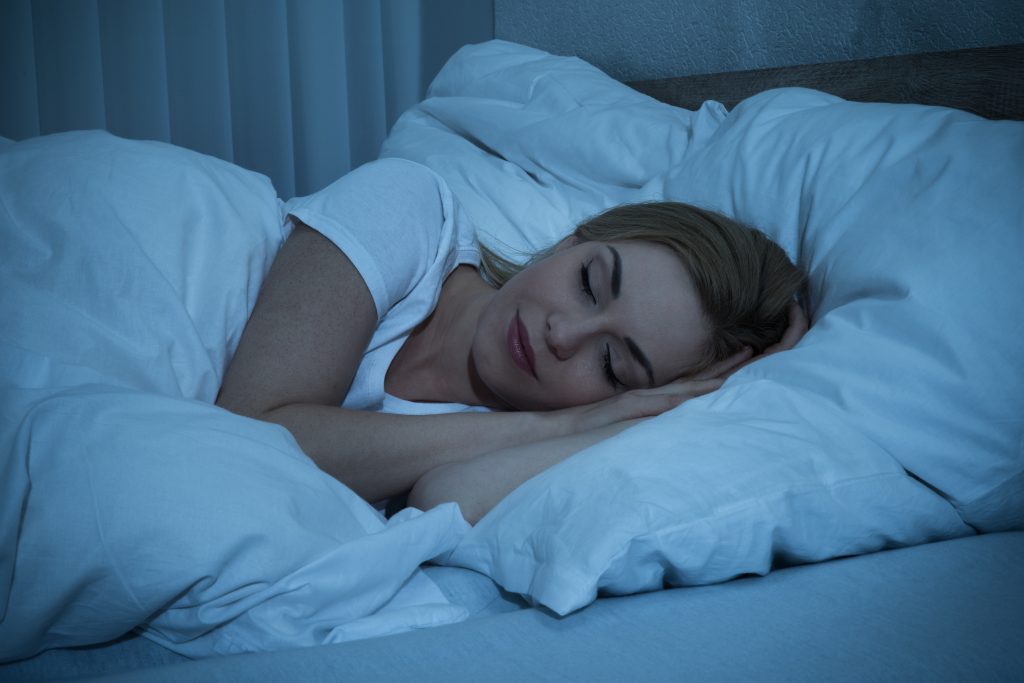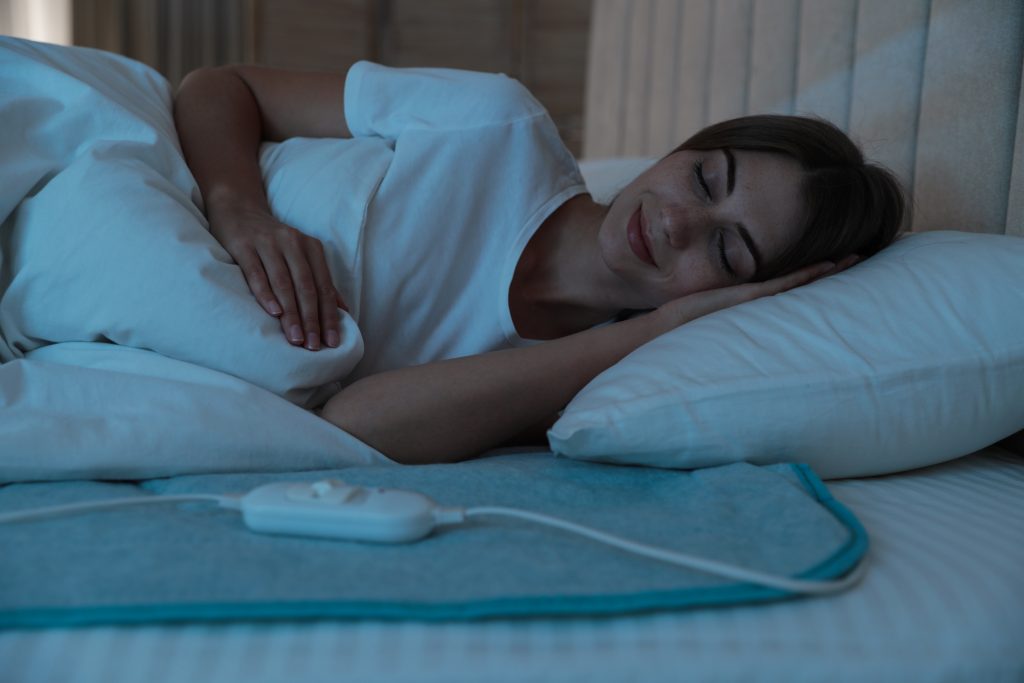October 7, 2021
How to Sleep with Lower Back Pain
Lower back pain can make it difficult to get a good night’s sleep. Pain can cause you to wake up frequently at night, and poor sleep can often worsen the pain. The key to finding pain relief and getting quality sleep at the same time is finding a comfortable position to sleep in.
Continue reading to learn tips on how to sleep when you have lower back pain.
What Causes Lower Back Pain While Sleeping?
Several factors can cause lower back pain while you sleep.
- Uncomfortable Mattress. An old or uncomfortable mattress can cause lower back pain. If your lower back pain goes away 20 minutes after you wake up, you may need a new mattress. A mattress that is too firm can push your spine out of alignment and cause pain. A mattress that is too soft can lead to poor posture while you sleep, causing pain.

- Awkward Sleeping Positions. Awkward sleeping positions can put pressure on your joints and spine to cause back strain. Finding a comfortable position to sleep in can often reduce lower back pain.
- Spinal Disc Degeneration. This age-related condition can occur when the discs between vertebrae lose cushioning and break down. Disc degeneration can often be effectively treated with exercise or surgery.
- Fibromyalgia. Fibromyalgia is a disorder that causes muscle pain and soreness all over the body. Your health care provider can help treat you for this disorder to help you sleep better at night.
- Scoliosis, endometriosis, and pregnancy can also be culprits of lower back pain.
Other common causes for lower back pain while sleeping include muscle aches, muscle tension, and osteoarthritis.
Why Do I Have Lower Back Pain When Sleeping on My Back?
Some people only experience lower back pain when laying down or when sleeping on their back. This can be caused by an injury or a painful condition like arthritis. Those with osteoarthritis of the spine may only feel lower back pain at night due to being inactive. A rare type of arthritis called ankylosing spondylitis causes inflammation in the back and neck that can get worse at night.
A strain or sprain can also cause lower back pain when ligaments or muscles are stretched too far.
Other health conditions, such as sciatica and spinal tumors, can cause lower back pain when lying on your back. Treating these conditions may help reduce back pain when lying down.
What’s the Best Way to Sleep with Lower Back Pain?
 The best sleeping position for lower back pain is on your side with a partial bend in the knees. This position can reduce pressure on the lower back and balance the body to prevent misalignment.
The best sleeping position for lower back pain is on your side with a partial bend in the knees. This position can reduce pressure on the lower back and balance the body to prevent misalignment.
The best way to sleep with lower back pain is on your left or right side.
Some people find that hugging a full-length body pillow while sleeping on your side is also helpful.
What Are Other Good Sleeping Positions for Lower Back Pain?
- You can try several other sleep positions if you continue to experience lower back pain when sleeping on your side.
- Lying on your back with a pillow under your knees and/or lower back may also be helpful.
- Try sleeping without a pillow under your head if you continue to feel lower back pain.
- Sleeping on your back in a reclined position reduces tension in the lower back.
What’s the Best Pillow for Lower Back Pain While Sleeping?
The right type of pillow can help reduce lower back pain while you sleep. If you sleep on your side, use a firm pillow under your head. If you sleep on your back, use a thin pillow that has extra padding at the bottom. Try using a memory foam pillow or a water pillow. A water pillow can be made firm or soft based on what feels most comfortable to you. If you sleep on your stomach, use a very thin pillow or no pillow at all.
How to Prevent Lower Back Pain While Sleeping
- First, try different sleeping positions to find the best one.
If necessary, get a new mattress, flip or rotate your mattress, or invest in a new pillow that can help you sleep more comfortably.
- Avoid consuming alcohol or caffeine within several hours before bedtime. These substances can cause you to frequently wake at night and may worsen back pain.
- Go to bed and wake up at the same time every day. Having a regular sleep routine can help you fall asleep more easily and prevent you from waking frequently.

Use a heating pad for 15 minutes prior to bedtime. Then, apply a topical lidocaine patch before you go to bed and leave it on for 12 hours. After you remove the patch, make sure you don’t apply a new lidocaine patch for 12 hours. While a lidocaine patch is applied, do not use a heating pad. Depending on your diagnosis, you can also use other topical options, such as Icy Hot, Salonpas, Voltaren.
- Exercise first thing in the morning or early in the afternoon. Exercise can help you feel more sleepy at night and may help reduce lower back pain. Ask your health care provider which exercises and activities are best for those with back pain.
- Develop a relaxing bedtime routine. Avoid activities within the hour before bedtime that may raise your stress levels, such as working, reading/watching the news, or doing household chores. These activities can cause anxiety that interferes with sleep. Instead, listen to soothing music, take a warm bath, or read a book.
- Eliminate sleep disruptions. If you tend to wake at night due to bright lights or loud noises outside your window, hang blackout curtains or noise-proof curtains that can help you sleep better. If you wake up feeling hot, use cooler bed sheets or reduce the temperature of your air conditioner.
DISCLAIMER
The information featured in this site is general in nature. The site provides health information designed to complement your personal health management. It does not provide medical advice or health services and is not meant to replace professional advice or imply coverage of specific clinical services or products. The inclusion of links to other web sites does not imply any endorsement of the material on such websites.